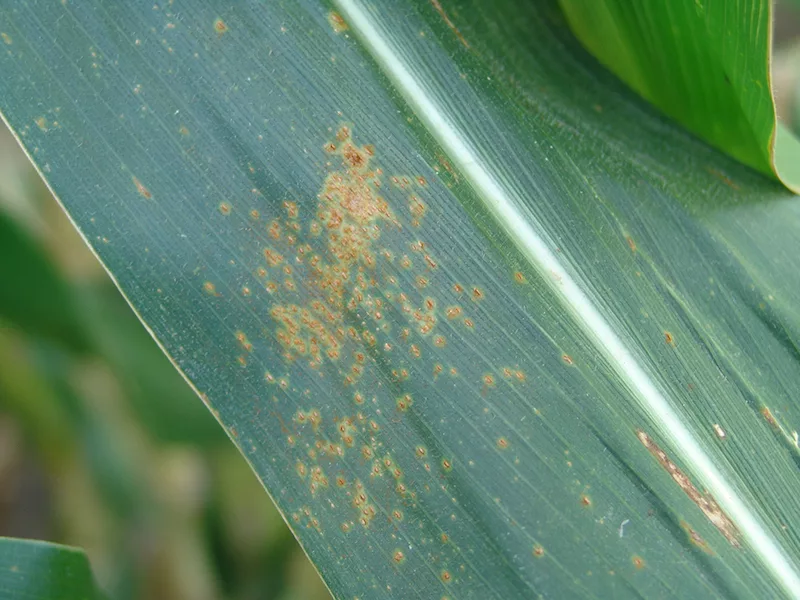Extension services in Nebraska, Kansas and Kentucky are reporting that southern rust is making a substantial push in their states, while farmers in Iowa, Illinois and Indiana are cautioned to scout due to recent confirmed sightings in their states.
Rarely seen in the Corn Belt, except for the Southern fringes, southern rust is more dangerous to yields than common rust. And what could be making corn more susceptible this year to southern rust is that much of the corn was planted later than normal due to wet conditions.
“For the guys in Kansas that are getting their corn in the ground in March, they almost never have to worry about southern rust,” says Doug Jardine, Kansas State University Extension plant pathologist. “Typically by the time the disease arrives, the corn is so far advanced in their cropping system — their production season — that it doesn’t matter. But sometimes we don’t get our crop planted on time because the weather’s not in our favor.”
Southern rust is caused by an aggressive fungus that can cause disease rapidly in susceptible corn hybrids under favorable weather conditions. If it becomes severe, it can cause significant yield loss. University of Nebraska Extension earlier this week warned that current weather conditions were favorable in their region for development and spread of southern rust.
The pathogen does not overwinter so its spores must be blown into areas by wind from the south, says Tamra Jackson-Ziems, University of Nebraska Extension plant pathologist.
“The fungus needs moisture to germinate and infect, so high relative humidity, rainfall and irrigation will hasten disease development. Warm temperatures favor southern rust development, especially temperatures in the upper 70s to lower 80s, even if they occur overnight,” she says.
A new southern rust tracking website has been set up to track the distribution of the disease. Confirmation of southern rust has been cited in south-central Iowa, western Indiana and southern Illinois as well.
Most corn hybrids are susceptible to the southern rust fungus, Jackson-Ziems says. Foliar fungicides can effectively manage the disease, and most systemic fungicides can provide protection of leaves from future infections for 21-28 days.
“The wide range of planting dates across Nebraska this year has resulted in a wide range of corn growth and reproductive stages in fields, some of which are still in the vegetative growth stages,” Jackson-Ziems says. “Later-planted fields that are earlier in their maturity are at the greatest risk for yield loss if the disease develops there soon.
“Southern rust can take days to several weeks to develop once it’s identified in an area, so immediate treatment may not be necessary for most fields. Spraying early may mean a second application is necessary later in the season to protect plants during later grain-fill stages as the disease increases in severity once the fungicide has worn off.”
Southern rust lesions are small, circular and evenly distributed across corn leaves. They are reddish-orange and predominantly found on upper leaf surfaces. Meanwhile, common rust has large oval pustules that are elongated and scattered over the leaves. They are brownish to cinnamon-brown in color.






